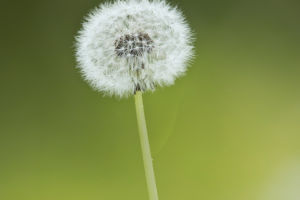During the process of seedling cultivation, it is essential to choose suitable conditions and environments to ensure healthy plant growth.
A good environment is crucial for strong seedlings, requiring attention to factors like light, humidity, and temperature.
Start by selecting high-quality seeds, as the quality directly impacts growth. When purchasing seeds, choose varieties with a high germination rate and ensure you understand the growth conditions they require.
Proper lighting is key for promoting germination, but avoid excessive exposure to strong light. Placing seedlings on a windowsill or other softly lit area is ideal; if indoor light is insufficient, consider using grow lights to provide extra illumination.
Once the seeds are ready, spread them evenly in a seedling substrate. Choose soil with good air permeability, or a mixed substrate like coco coir or perlite, which supplies necessary nutrients. When sowing, keep the depth shallow to avoid reduced germination rates.
After sowing, lightly cover the seeds with soil, aligning the surface with the seeds to help retain moisture and nutrients. Keep the soil moderately moist to prevent drying out, as it could hinder germination.
Using a sprayer is an excellent choice for watering because pouring water directly might disturb the seeds. Controlling the amount of water is also essential; avoid overwatering to prevent seed rot.
Temperature is another important environmental factor. During the seedling stage, a temperature between 20-25°C is optimal, as it encourages faster germination.
In colder seasons or areas with low temperatures, use a heating mat or greenhouse to maintain the right conditions for seed germination. When temperature and humidity are well-managed, most seeds will start to sprout within 1 to 2 weeks.
When the seedlings have grown two to four true leaves, thinning can be done by removing some of the densely packed seedlings to give each one adequate space.
Thinning helps the roots expand and strengthens growth. Be cautious when thinning to avoid damaging the roots. At this stage, you can gradually increase light exposure to help the seedlings develop stronger stems and reduce disease risks.
Fertilization during the seedling phase is also crucial; it's best to use a diluted liquid fertilizer about every two weeks to provide nutrients. Ensure the concentration is low to avoid harming the seedlings.
When the seedlings are acclimated to the growing environment, consider transplanting them to larger containers or directly outdoors. Before transplanting, start hardening the seedlings to gradually introduce them to outdoor conditions, such as sunlight and wind, for improved adaptation and survival rate.
Hardening usually begins about a week before transplanting by increasing outdoor time each day, allowing the plants to adjust to natural conditions.
The best time for transplanting is usually in the evening or on cloudy days to reduce water evaporation and avoid direct sunlight stress. During transplanting, try to keep the soil around the roots intact as you gently remove them from the seedling medium.
Plant them carefully in fresh soil and water promptly to maintain moisture, helping them adjust to their new environment. Provide some shade initially to reduce direct sunlight; once acclimated, gradually restore full light exposure.
After establishment, maintaining appropriate watering and fertilization remains essential. Watering frequency should be based on the soil's drainage, climate, and the plant's needs, avoiding excess water accumulation that can cause root rot.
For fertilization, apply a balanced fertilizer once a month during the growing season to ensure sufficient nutrients. Regularly clear weeds around the seedlings to prevent competition for nutrients. .
Monitoring the plants for signs of pests and diseases is key to keeping seedlings healthy. Using organic pesticides or physical methods can help protect the plants naturally.
Successful seedling cultivation requires a suitable environment, careful management, and scientific methods. By controlling temperature, light, moisture, and other factors, using appropriate fertilizers and soils, and hardening before transplanting, healthy seedlings can be grown gradually.
With careful attention to each growth stage and patient adjustments, you will ultimately have robust, thriving plants with a high survival rate


